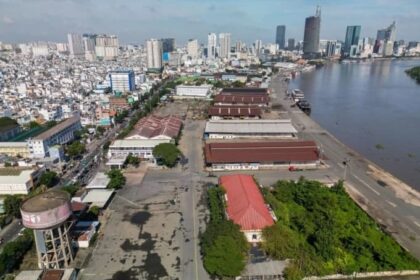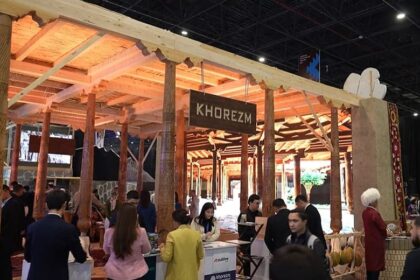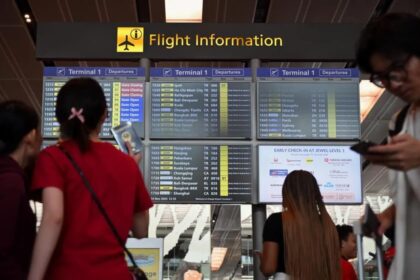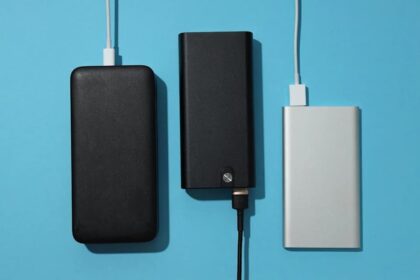Malaysia’s Rail Revolution: Express Rail to Johor Bahru Replaces High-Speed Rail to Singapore
The completion of the Gemas–Johor Bahru Electrified Double Tracking Project (EDTP) marks a transformative milestone for Malaysia’s rail network. This ambitious infrastructure upgrade is set to redefine travel along the West Coast of Peninsular Malaysia, offering faster, more reliable, and environmentally friendly train services. As the long-discussed Kuala Lumpur–Singapore High-Speed Rail (HSR) project remains on hold, the new express rail to Johor Bahru (JB) emerges as a practical and cost-effective alternative, reshaping the nation’s transportation landscape and regional connectivity.
- Malaysia’s Rail Revolution: Express Rail to Johor Bahru Replaces High-Speed Rail to Singapore
- What is the Gemas–Johor Bahru Electrified Double Tracking Project?
- How Will the New Express Rail Transform Travel?
- Why Was the High-Speed Rail to Singapore Sidetracked?
- Official Launches and Public Reception
- Challenges and Lessons Learned
- Broader Implications for Malaysia’s Rail Network
- In Summary
What is the Gemas–Johor Bahru Electrified Double Tracking Project?
The EDTP is a RM9.5 billion initiative to modernize the final 192-kilometre stretch of Malaysia’s West Coast rail corridor, connecting Gemas in Negeri Sembilan to Johor Bahru at the southern tip of the peninsula. This project upgrades the existing single-track, diesel-powered railway to a double-track, electrified system, enabling higher speeds, greater capacity, and improved reliability.
With 11 stations along the route—including Segamat, Kluang, Kulai, and JB Sentral—the EDTP completes the electrification of the West Coast Line, which now stretches from Padang Besar on the Thai border to Johor Bahru. The project is being delivered by YTL Construction in partnership with SIPP Rail Sdn Bhd, and is part of a broader government strategy to modernize public transport, boost economic growth, and enhance regional integration.
Project Timeline and Delays
Originally slated for completion in 2021, the EDTP faced multiple setbacks due to the Covid-19 pandemic, land acquisition issues, and technical challenges with electrification. Despite these hurdles, the project reached over 98% completion by late 2024, with full operations expected by August 2025. The phased rollout began with ETS (Electric Train Service) operations to Segamat in March 2025, followed by Labis in April, Kluang in May, and the final extension to JB Sentral scheduled for September.
Transport Minister Anthony Loke Siew Fook has repeatedly emphasized the importance of safety and thorough testing, explaining that delays—particularly in the Segamat district—were necessary to ensure the reliability of the new electric feeder lines and overhead systems. Officials now anticipate the entire line will be operational by the end of 2025, serving as a catalyst for economic development in Johor and beyond.
How Will the New Express Rail Transform Travel?
The electrified double track brings a dramatic reduction in travel time. The journey from Kuala Lumpur Sentral to JB Sentral, which previously took up to seven hours on slow, diesel trains, will now be completed in as little as 3.5 to 4.5 hours. Trains will operate at speeds of up to 140–160 km/h, with up to 22 daily services and seating for 300–346 passengers per train.
This leap in efficiency makes rail travel competitive with both road and air options. For business travelers, the express rail offers a time- and cost-effective alternative to flying, especially when factoring in airport transfers and security checks. For leisure passengers, the train promises a comfortable, scenic, and environmentally friendly journey, with modern amenities such as WiFi, USB charging ports, and spacious luggage compartments on the new ETS3 trains.
Singaporean travelers also stand to benefit. With the upcoming Johor Bahru–Singapore Rapid Transit System (RTS) Link set to open by January 2027, cross-border connectivity will be further enhanced. Passengers can soon cross into JB, board the ETS at JB Sentral, and travel directly to Kuala Lumpur, bypassing the notorious traffic congestion on the Causeway and the hassle of airport commutes.
Service Types and Economic Impact
The upgraded southern line opens the door for Keretapi Tanah Melayu Berhad (KTMB) to rethink its service offerings:
- Express business class services: Non-stop or limited-stop trains between KL Sentral and JB Sentral, targeting business travelers seeking speed and comfort.
- Intercity services: Trains stopping at major towns like Seremban, Pulau Sebang (Melaka), Segamat, and Kluang, balancing speed with regional accessibility.
- Commuter rail: Frequent services for daily commuters within Johor, connecting Segamat, JB, Pasir Gudang, and Tanjung Pelepas, easing road congestion and supporting urban mobility.
Johor Bahru, Malaysia’s second-largest city and a key economic gateway, is poised to reap significant benefits. Improved rail connectivity is expected to boost investment, tourism, and labor mobility, while also supporting freight movement between Port Klang and the Port of Tanjung Pelepas. The project is projected to serve around 3,000 passengers daily on the JB–KL route, with numbers likely to grow as the service matures.
Why Was the High-Speed Rail to Singapore Sidetracked?
The Kuala Lumpur–Singapore High-Speed Rail (HSR) project, once touted as a game-changer for regional integration, has been repeatedly delayed and remains uncertain. The HSR promised a sub-two-hour journey between the two capitals, but its estimated cost—reportedly over RM60 billion—proved prohibitive. The project also faced political hurdles, complex land acquisition issues, and questions about long-term viability.
In contrast, the EDTP is already built, fully funded by the government, and integrated into Malaysia’s existing rail system. While it does not match the HSR’s top speeds, the express rail delivers substantial improvements in travel time and convenience without the financial and political baggage. As one government official put it, “The express rail to JB is a practical solution that meets the needs of Malaysians today, while keeping the door open for future upgrades.”
Official Launches and Public Reception
The launch of the new ETS3 service was marked by a historic event: His Majesty the Yang di-Pertuan Agong Sultan Ibrahim personally piloted the inaugural train from Kuala Lumpur to Kluang. Accompanied by Transport Minister Anthony Loke and other dignitaries, the King’s involvement underscored the national significance of the project. Upon arrival in Kluang, the King officiated the opening of the Laman Rel Mahkota, a 2.8-kilometre public park developed beneath the railway viaduct, symbolizing the project’s commitment to community and environmental enhancement.
Public response has been overwhelmingly positive, with travelers eager to experience the new level of comfort and efficiency. The phased opening of stations has been celebrated with local events, and KTMB has reported strong demand for tickets on the new routes. The project has also inspired related developments, such as the Kluang Heritage Railway Linear Park, which aims to create green spaces and promote low-carbon urban development.
Challenges and Lessons Learned
The journey to completion was not without obstacles. The Covid-19 pandemic disrupted supply chains and workforce availability, while land acquisition and technical issues with electrification caused further delays. The need for rigorous safety testing, particularly of the electric feeder lines and overhead systems, led to missed deadlines in Segamat and other districts.
Despite these challenges, the project’s steady progress demonstrates the importance of resilience, transparency, and adaptability in large-scale infrastructure development. The government’s commitment to seeing the EDTP through, even as the HSR project stalled, reflects a pragmatic approach to national priorities and fiscal responsibility.
Broader Implications for Malaysia’s Rail Network
The Gemas–Johor Bahru EDTP is the final piece in Malaysia’s West Coast Rail Electrification Programme, which began in 2011. Earlier phases—such as the Rawang–Ipoh (2008), Seremban–Gemas (2013), and Ipoh–Padang Besar (2014) segments—have already delivered significant benefits, easing traffic congestion and stimulating local economies.
With the completion of the southern corridor, Malaysia now boasts a fully electrified rail line from the Thai border to Johor Bahru. This positions the country as a regional leader in sustainable transport and logistics, supporting both passenger and freight movement across the peninsula. The modernized network is expected to attract further investment, enhance tourism, and provide a foundation for future upgrades, including potential high-speed services if demand and funding align.
Integration with Regional Projects
The express rail’s synergy with the upcoming Johor Bahru–Singapore RTS Link is particularly noteworthy. The RTS, scheduled to open by January 2027, will provide seamless cross-border transit for thousands of daily commuters, shoppers, and tourists. Together, these projects promise to transform the southern corridor into a vibrant, interconnected economic zone, strengthening ties between Malaysia and Singapore.
In Summary
- The Gemas–Johor Bahru Electrified Double Tracking Project is a RM9.5 billion upgrade, modernizing the final stretch of Malaysia’s West Coast rail corridor.
- Travel time between Kuala Lumpur and Johor Bahru will be slashed from seven hours to as little as 3.5–4.5 hours, with fast, frequent, and comfortable electric trains.
- The project faced delays due to the pandemic, land acquisition, and technical challenges, but is on track for full completion by August 2025.
- The new express rail offers a practical alternative to the stalled KL–Singapore High-Speed Rail, delivering substantial benefits without the high costs and political hurdles.
- Enhanced connectivity is expected to boost economic growth, investment, tourism, and labor mobility in Johor and the wider region.
- Integration with the upcoming Johor Bahru–Singapore RTS Link will further improve cross-border travel and regional integration.
- The project’s success highlights the value of resilient, phased infrastructure development and positions Malaysia as a leader in sustainable rail transport.











